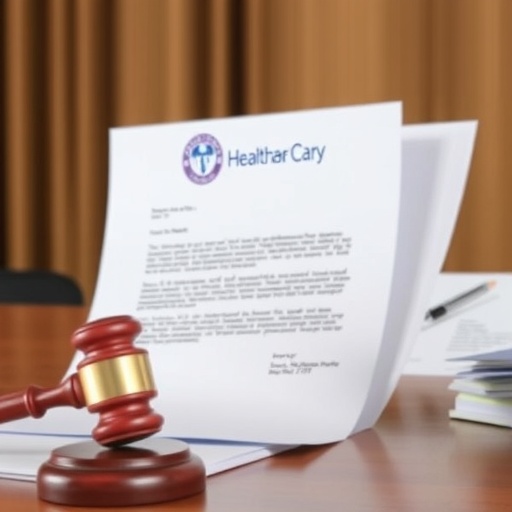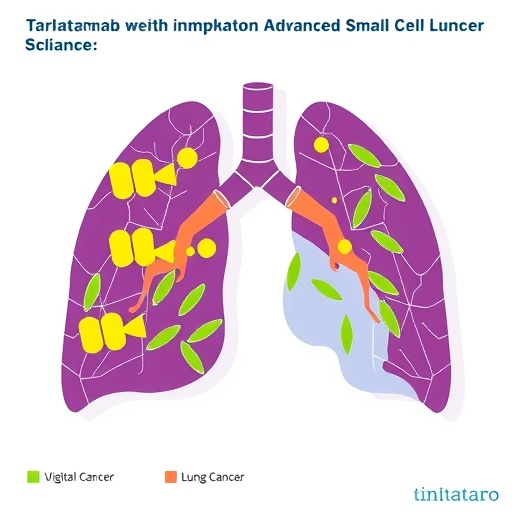In recent years, the intersection of healthcare and the legal system has garnered increasing scrutiny, particularly in light of how healthcare provider letters are interpreted and utilized in court proceedings. An impending study set to be published in the Journal of General Internal Medicine in 2025 sheds considerable light on this complicated landscape. Authored by researchers van Deventer, Giron, and Tobin-Tyler, the paper explores the nuances and implications of qualitative analyses behind the letters that medical professionals submit in legal contexts. Understanding these dimensions is crucial as the outcomes of such proceedings can significantly impact patient care and broader healthcare policies.
The study, entitled “Sure, Let’s See What You Got,” embarks on a comprehensive qualitative analysis of the healthcare letters employed in legal cases. These communications, often overlooked in discussions about medical malpractice and legal accountability, serve critical roles in shaping judicial perceptions of medical practice and patient care. Through a methodical approach, the authors delve deep into the language and content of these letters, examining how they reflect healthcare providers’ intentions and compliance with legal standards.
To understand why this research is timely, it’s important to recognize the increasing interface between the medical community and the judicial system. With more legal cases emerging in the domain of healthcare, providers often find themselves under significant pressure to articulate their actions and decisions cogently in written form. Letters to the court can be decisive; they offer insights into healthcare providers’ observations, rationales, and, at times, their justifications for treatment choices. However, the subtleties of how these letters are perceived can vary dramatically depending on their language and structure.
One primary focus of the analysis is the delineation of rhetorical strategies utilized by healthcare providers in drafting their letters. The study reveals that many practitioners inadvertently rely on clinical jargon or technical language that may not be easily understood by non-medical professionals, including judges and jury members. The layering of intricate medical terminology can cloud important messages. As a result, what could potentially be a clarifying letter about a patient’s condition may morph into a convoluted narrative that confuses rather than elucidates.
Moreover, the research suggests that letters crafted for legal contexts often emphasize perceived objectivity and detachment from emotional considerations. While objectivity is crucial, excessive detachment might make the letters seem impersonal, potentially alienating the very audience they seek to persuade. This could lead to negative implications in court outcomes, where empathy and understanding play pivotal roles in influencing judges and juries.
Another aspect the study touches upon is the effect of tone. The subtle nuances of tone in a letter can affect its reception drastically. A letter that comes across as defensive may raise suspicions and lead to adverse interpretations, while one that is measured and conciliatory could foster an atmosphere of trust and credibility. The authors argue that healthcare providers need training on the importance of tone, especially when writing documents that will be scrutinized under the intense gaze of the law.
Contextual evidences also emerge as significant factors in understanding how letters are formulated. The research findings indicate that healthcare providers often draw upon their experiences with similar legal cases, leading to a pattern in the way information is articulated in their letters. This unconscious replication of approaches may undermine the individuality of cases that require distinct perspectives, as the providers might not fully capture the unique aspects of each patient’s situation.
Equally noteworthy is the study’s emphasis on the role of external pressures that healthcare providers face. From the fear of litigation to the demands of insurance companies, these pressures may substantially influence the content and tone of their correspondence. The overarching fear of negative repercussions can lead to an over-cautious approach, potentially compromising the clarity and precision required in legal letters. Therefore, understanding these pressures is vital for addressing the systemic issues that contribute to suboptimal communication in legal contexts.
The analysis’s implications extend beyond the immediate impact on individual letters. The findings raise important questions about training and standards for healthcare providers engaging with the legal system. Educating medical professionals on best practices for writing letters that demonstrate compassion while remaining factual could be a game-changer. It could also lead to better outcomes in court, ultimately benefiting patient care by enhancing the quality of medical narratives that enter the legal arena.
Additionally, the study underlines a significant gap in the current educational curricula for medical professionals. As healthcare systems increasingly navigate the complexities of legal cases, incorporating training focused on effective legal communication strategies into the medical education syllabus becomes paramount. Adding such dimensions will enable future healthcare providers to convey their messages with confidence and clarity, ensuring they represent their patients accurately.
Furthermore, the authors advocate for interdisciplinary collaboration between legal experts and healthcare professionals. Building a framework where lawyers can guide medical writers on effective communication strategies might not only empower healthcare providers but also enhance the judicial reliance on these letters. The collaboration could ultimately promote a more nuanced understanding of medical evidence in courtrooms, enriching the discourse between healthcare and legal practice.
As the legal landscape continues to evolve, this research addresses an urgent need for clarity and effectiveness in communication between healthcare professionals and the judiciary. The analysis presented by van Deventer and colleagues serves as a reminder that every letter written carries implications far beyond the individual case at hand. It signifies the evolving relationship between healthcare and law, prompting meaningful discourse on how best to navigate this complex interplay.
The serial analysis of healthcare provider letters not only contributes to scholarly discussions but also holds the power to influence policy changes within healthcare practices. As the medical community becomes increasingly aware of these dynamics, we may expect to see shifts toward enhanced communication training and a culture that values precise articulation of medical opinions in intersectional contexts.
As the release of this study approaches, it promises to stir dialogue among healthcare professionals, educators, and legal practitioners alike. These conversations are integral to fostering an environment where effective communication does not merely meet legal standards but also upholds ethical healthcare practices that prioritize patient-centered care.
Through their qualitative analysis, van Deventer, Giron, and Tobin-Tyler have opened a crucial window into the role of communication in healthcare and the legal system. Their work not only broadens our understanding but also emphasizes the need for continued research in this area, advocating for a future where healthcare communication is clear, compassionate, and effective within the courtroom setting.
Subject of Research: The qualitative analysis of healthcare provider letters used in court proceedings and their impact on legal outcomes.
Article Title: “Sure, Let’s See What You Got”: A Qualitative Analysis of Healthcare Provider Letters Used in Court Proceedings.
Article References:
van Deventer, E., Giron, N.C., Tobin-Tyler, E. et al. “Sure, Let’s See What You Got”: A Qualitative Analysis of Healthcare Provider Letters Used in Court Proceedings.
J GEN INTERN MED (2025). https://doi.org/10.1007/s11606-025-09891-y
Image Credits: AI Generated
DOI: 10.1007/s11606-025-09891-y
Keywords: Healthcare provider letters, court proceedings, qualitative analysis, medical communication, legal implications, healthcare law.
Tags: communication strategies in medical malpracticehealthcare policy and legal standardshealthcare provider lettersimpact of healthcare letters on patient careintersection of healthcare and lawjudicial perceptions of medical practicelegal accountability in healthcarelegal implications of medical communicationmedical malpractice courtroom strategiesqualitative analysis in healthcare litigationresearch on healthcare and legal system dynamicsrole of medical professionals in legal cases





